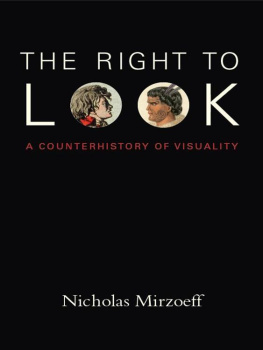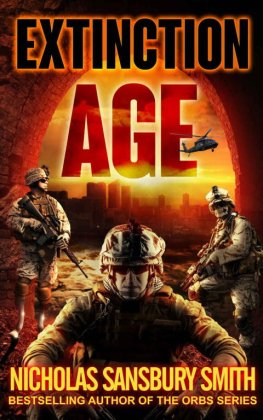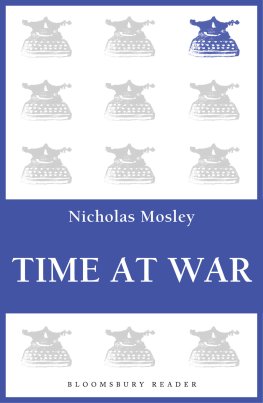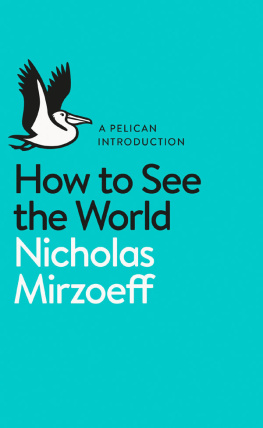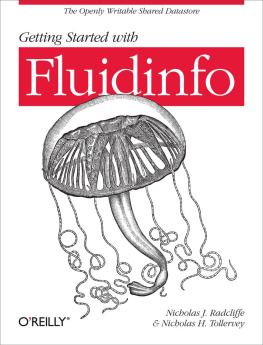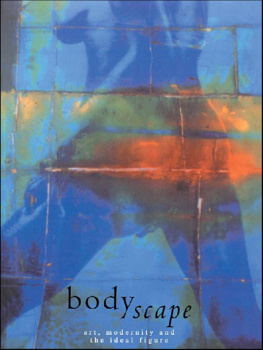Nicholas Mirzoeff - The Right to Look
Here you can read online Nicholas Mirzoeff - The Right to Look full text of the book (entire story) in english for free. Download pdf and epub, get meaning, cover and reviews about this ebook. year: 2011, publisher: Duke University Press, genre: Romance novel. Description of the work, (preface) as well as reviews are available. Best literature library LitArk.com created for fans of good reading and offers a wide selection of genres:
Romance novel
Science fiction
Adventure
Detective
Science
History
Home and family
Prose
Art
Politics
Computer
Non-fiction
Religion
Business
Children
Humor
Choose a favorite category and find really read worthwhile books. Enjoy immersion in the world of imagination, feel the emotions of the characters or learn something new for yourself, make an fascinating discovery.
- Book:The Right to Look
- Author:
- Publisher:Duke University Press
- Genre:
- Year:2011
- Rating:5 / 5
- Favourites:Add to favourites
- Your mark:
- 100
- 1
- 2
- 3
- 4
- 5
The Right to Look: summary, description and annotation
We offer to read an annotation, description, summary or preface (depends on what the author of the book "The Right to Look" wrote himself). If you haven't found the necessary information about the book — write in the comments, we will try to find it.
The Right to Look — read online for free the complete book (whole text) full work
Below is the text of the book, divided by pages. System saving the place of the last page read, allows you to conveniently read the book "The Right to Look" online for free, without having to search again every time where you left off. Put a bookmark, and you can go to the page where you finished reading at any time.
Font size:
Interval:
Bookmark:
A COUNTERHISTORY OF VISUALITY
Nicholas Mirzoeff

Duke University Press
Durham & London
2011
2011 Duke University Press
All rights reserved
Printed in the United States of America on acid-free paper 
Designed by Amy Ruth Buchanan
Typeset in Bembo by Tseng Information Systems, Inc.
Library of Congress Cataloging-in-Publication Data appear on the last printed page of this book.
ISBN-13: 978-0-8223-9372-6 (electronic)
ForKRIS, KARIN, andKATHLEEN
with great love and respect, and in solidarity.
And forHANNAHin hope of better futures
PLATES
FIGURES
Ineluctable Visualities
It's a while now that I've been tarrying with what James Joyce, in Ulysses, called the ineluctable modality of the ineluctable visuality. That typically Joycean phrase could detain us for a while: why is visuality ineluctable? Who has made it so? It's a repetition with a difference of a phrase that appears earlier in Ulyssesineluctable modality of the visibleand both are part of Proteus, Stephen Dedalus's interior monologue on the beach early in the day. Visuality is not, then, the visible, but it is twice ineluctable, unavoidable, inevitable. Nor, to be brief, is it a new way of thinking, any more than that currently fashionable term modality. By linking visuality with the archaic ineluctable, Joyce pushes us in the direction of seventeenth-century metaphysics, and behind them Aristotle, appropriate to Dedalus's concern with the veil between life and death as he mourns his mother and seeks the word known to all men. So visuality is not the visible, or even the social fact of the visible, as many of us had long assumed. Nor is it one of those annoying neologisms that are so ripe a target for the book reviewer, for, as Joyce perhaps realized, the word became part of official English in 1840, in the work of Thomas Carlyle, fulminator against modernity and emancipation of all kinds. As Carlyle himself emphasized, the ability of the Hero to visualize was no innovation but Tradition, a mighty force in the eyes of imperial apologists. To get the measure of this long Tradition andthe force of authority that renders it so ineluctable takes some time and space with no apologies. That story, the one implied by an Anglo-Celtic (Carlyle was Scottish) imperial imaginary, is the one whose counterhistory is offered here.
For in trying to come to terms with the ineluctable qualities of visuality, I have wanted to provide a critical genealogy for the resistance to the society of the spectacle and the image wars of recent decades. In turn, that genealogy would provide a framework for critical work in what has become known as visual culture, not because historicizing is necessarily always good, but because visuality both has an extensive and important history and is itself a key part of the formation of Western historiography. More precisely, visuality and its visualizing of history are part of how the West historicizes and distinguishes itself from its others. In this view, the visual turn represented academically by visual culture was not liberating in and of itself, but sought to engage the deployment of visualized authority at its points of strength. In so doing, I have crossed multiple borders, whether literally in pursuit of archives or other materials researched on three continents and in two hemispheres, or figuratively in the interface with academically discrete sets of area studies, historical periodization, and media histories. One of the early criticisms of the field of visual culture was its apparent hesitation to engage with weighty issues. The publication of such major books as W. J. T. Mitchell's What Do Pictures Want? (2005) and the late lamented Anne Friedberg's The Virtual Window: From Alberti to Microsoft (2006) has handily disposed of such objections. In this book I hope to follow in such exalted footsteps by developing a comparative decolonial framework for the field. I was impelled to do so by the questions raised in my study of the war in Iraq, Watching Babylon: The War in Iraq and Global Visual Culture (2005). Writing quickly, in the sadly mistaken belief that this would be a short conflict, I came up against the paradox that the immense quantity of imagery generated by the war had relatively little effect on the general public, a phenomenon I labeled the banality of images. Nor did the Abu Ghraib photographs, disturbing as they of course were, challenge that view. The photographs were not mentioned in the U.S. elections of 2004, and no military figure above the level of the prison itself was subsequently disciplined: indeed, everyone in the chain of command leading to the Abu Ghraib scandal was promoted. Against all traditions of photojournalism and other modes of visual revelation, it seemed that visuality had become a weapon for authority, not against it. In order to make sense of the apparentconundrum that such shocking images have had so little public effect, it is critical to locate them in the genealogy I describe here.
I am not trying to reduce the materialized visualization to a cipher. On the contrary, it seems to me that one of the major implications of W. J. T. Mitchell's famous claim, in 1994, that visual materials of all kinds are as complex and significant as print culture is that the visual image is an archive in its own right. Without extending this discussion, one issue of border crossing in this regard can be taken as an example of the issues involved. In a number of instances drawn from the plantation complex of the Atlantic world, I have used imagesor sometimes even the knowledge that there were images which have been lostas a form of evidence. When I draw inferences from enslaved, formerly enslaved, subaltern, or colonial subjects, there is often no textual support I can draw on beyond the visual image. Therefore I use the formal analysis of style, composition, and inference that is commonplace within the Western canon and its hinterlands to support my arguments. I further claim that the wider historical frame I am developing here would reinforce such interpretations, just as many cultural historians have done before me. I may be wrong, of course, but the use of the visual archive to speak for and about subaltern histories of this kind, as opposed to simply being illustrative of them, seems to me an important methodological question. If formal use of that visual archive is to be disallowed in, say, Puerto Rico, then I want it disqualified in Rome as well. And if that is not going to happen, then what methodological objection is operative in one place but not the other? This objection comes most often from those in the field of art history, where attribution is a central question. I do not, however, conceive of this book as art history, but rather as part of the critical interpretation of media and mediation, performing what Mitchell has usefully called medium theory, all puns intended. In this sense, I consider visuality to be both a medium for the transmission and dissemination of authority, and a means for the mediation of those subject to that authority.
The main text will either justify these claims to readers or not. Here I would like to indicate one or two omissions that might not be self-evident. As a matter of framing and containing this project, I have used the tradition of authority that first inspired Carlyle and then was inspired, directly or indirectly, by him. That is to say, this is a genealogy of the Anglo-French imperial project that was launched in the direction of plantation colonies in the mid-seventeenth century and then diverged radically with theoutbreak of the French and Haitian Revolutions (17891804). This legacy was disseminated to the United States in its capacity as a former British colony and by Ralph Waldo Emerson's adaptation of Carlyle, published as
Font size:
Interval:
Bookmark:
Similar books «The Right to Look»
Look at similar books to The Right to Look. We have selected literature similar in name and meaning in the hope of providing readers with more options to find new, interesting, not yet read works.
Discussion, reviews of the book The Right to Look and just readers' own opinions. Leave your comments, write what you think about the work, its meaning or the main characters. Specify what exactly you liked and what you didn't like, and why you think so.

